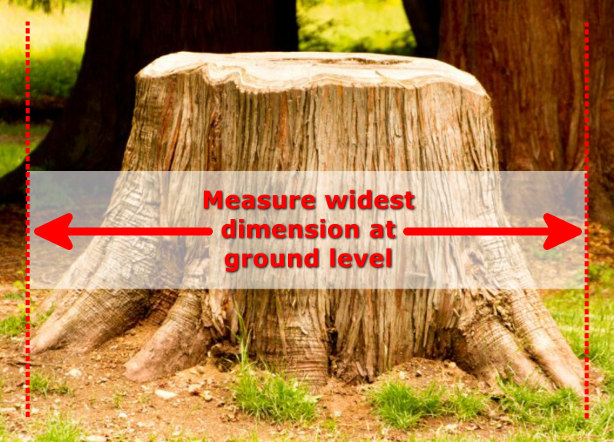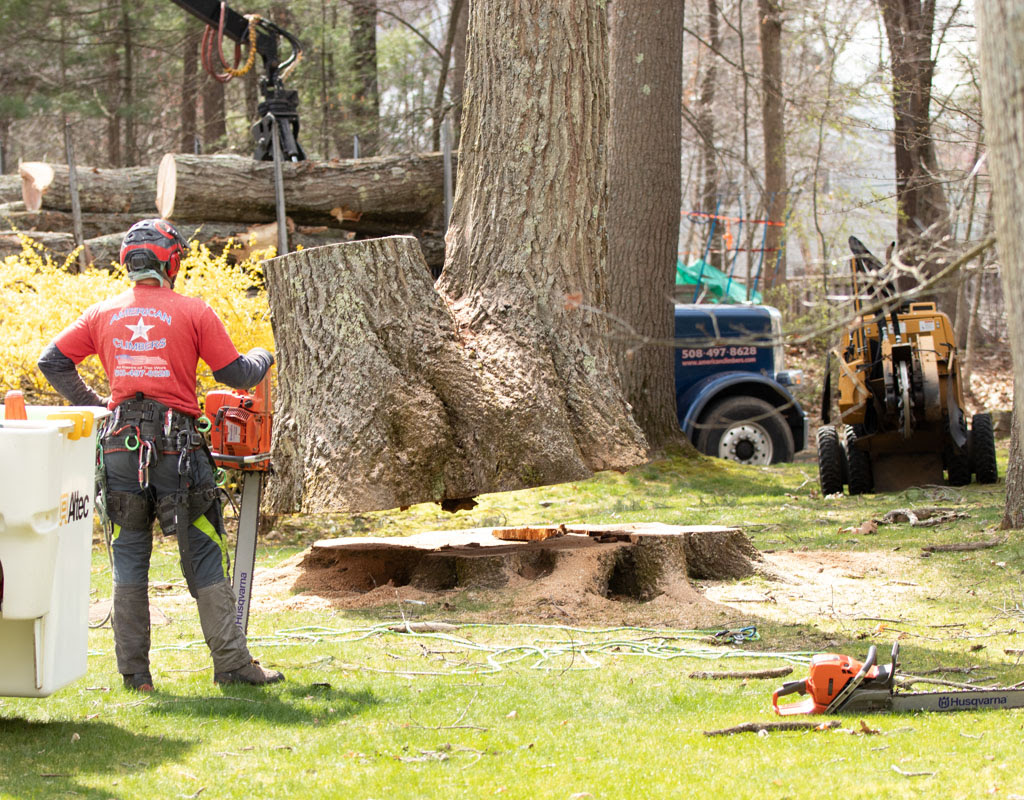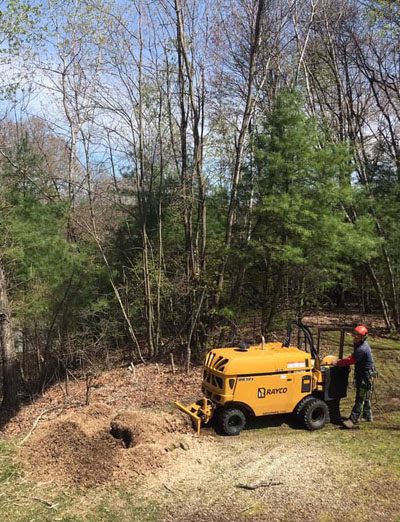


Stump grinders are powerful machines that look—depending on their size and model—a little like a lawnmower and a circular saw had a baby together. They’re designed to be rolled up to the stump and then grind it into little pieces.
A stump grinder chews away at the stump wood that’s left after a tree has been cut down. All stump grinders use a powerful, rotating blade that rips into the wood as it turns. The blade’s teeth cut the stump wood into small pieces. The operator guides the blade over the entire stump as the blade reduces the wood to chips, and takes the stump down to well below ground level.
Stump grinding results in lots of chips of wood. You’ll make more of them than you think, but they can be used as mulch on-site or added to your green waste can. You’ll also have a hole, since you’ve just ground out all the stump volume that filled it. You can shovel the wood chips into the hole to decay, or you can import soil and fill the hole so that it’s even with the surrounding ground.
Tree-removers can’t cut a tree down flush with the ground, so there will always be a stump.

It’s your decision, but you may want to learn more about what to expect if you don’t remove the stump after you remove your tree. Many homeowners can’t anticipate how much a left-over tree stump will stand out after a tree is removed, especially if the rest of their garden is tidy and maintained. Grinding out the stump, by comparison, gives you a clean slate for future landscape design. Because it chews stump wood down below ground level, a stump grinder ensures that your tree stump won’t re-sprout with suckering growth around its perimeter. This is often the best argument for stump grinding; leaving a stump in place can mean repeated sucker pruning, a garden chore that offers little satisfaction, as you’re never done. While suckering sprouts are a natural response by the tree after its trunk has been cut down, none of this growth is useful and won’t make a healthy new tree. Instead, you’ll have lots of sprouts that turn into branches that will need to be cut down over and over until the tree exhausts its energy reserves. This can take a long time.
NOTE: Coppicing is an ancient practice where woodland or forest tree trunks are cut down to ground level and new sprouts are encouraged to grow from them. Depending on a tree’s species, the new, sprouting wood grows until it’s harvested for firewood, fencing, thatching, or woodworking. On a healthy coppiced tree, these cycles of growth and harvesting can go on for decades and longer. But chances are you won’t need this in your yard! A leftover stump doesn’t always have to be removed, but ask yourself if you want to look at a tree stump for years to come, or deal with its suckering growth. Depending on its size, height, and location, a stump may be an eyesore (especially as it slowly rots away), and it also may become a tripping hazard. It can also attract insect pests, develop fungal diseases (that can spread to nearby trees), and cause soft, sunken spots in the surrounding lawn or garden as it decomposes. On the other hand, a stump can become part of a funky garden design, can be used as an informal base for potted plants or sculptures, and can be painted, decorated, or sculpted.
One important consideration is whether or not you plan to build where the tree stump is, or add a patio or paving. Because a tree stump is wood, an organic material, it will decompose over time. This means that it isn’t a stable base material for construction, and any foundations, footings, or rigid materials will move over time.
So even if your stump is ground out, there may be trunk and root material left below ground that will decay and settle, damaging your construction. In this case, you’ll want to make sure all remaining stump and roots are removed and that the hole is in-filled with native soil (not bagged potting soil), and then compacted to the level required for construction.
